Get our email updates
Stay up-to-date on the companies, people and issues that impact businesses in Syracuse, Central New York and beyond.
What's New
Upcoming Events
CNYBJ Job Board
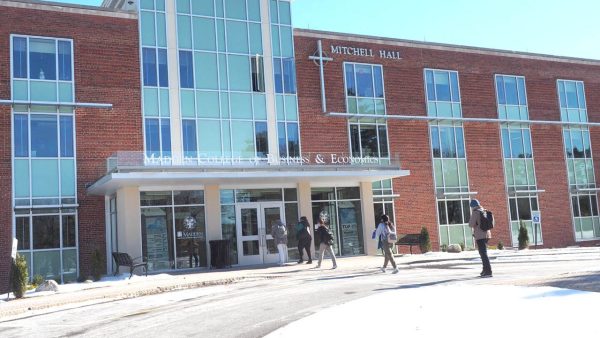
Le Moyne’s Madden Corporate Partnership Program is underway
SYRACUSE — The Madden Corporate Partnership Program (MCPP) is a new initiative at Le Moyne College through the school’s Madden College of Business and Economics. The college has selected M&T Bank (NYSE: MTB) as its first corporate partner under the MCPP. Under the program, eligible employees of M&T Bank (NYSE: MTB) who enroll in selected […]
Get Instant Access to This Article
Become a Central New York Business Journal subscriber and get immediate access to all of our subscriber-only content and much more.
- Critical Central New York business news and analysis updated daily.
- Immediate access to all subscriber-only content on our website.
- Get a year’s worth of the Print Edition of The Central New York Business Journal.
- Special Feature Publications such as the Book of Lists and Revitalize Greater Binghamton, Mohawk Valley, and Syracuse Magazines
Click here to purchase a paywall bypass link for this article.
SYRACUSE — The Madden Corporate Partnership Program (MCPP) is a new initiative at Le Moyne College through the school’s Madden College of Business and Economics.
The college has selected M&T Bank (NYSE: MTB) as its first corporate partner under the MCPP. Under the program, eligible employees of M&T Bank (NYSE: MTB) who enroll in selected graduate programs in the Madden College of Business and Economics will receive a 20 percent reduction in tuition.
The programs include the Master of Business Administration (MBA) and Master of Science in Information Systems (MSIS) degrees. The tuition reduction would start with the spring 2026 semester.
M&T Bank has nearly 400 employees working in the Central New York region and the bank sees value in opening a pathway to a Le Moyne degree for those who are interested.
“Recognizing their strong presence in this region, we approached Le Moyne about becoming a corporate partner for these graduate programs in the Madden College of Business and Economics,” Steve Gorczynski, M&T Bank regional president for Central New York, said in the Le Moyne announcement. “As a 1990 graduate, I know firsthand the value of a Le Moyne education and the distinction that comes from earning a degree from the College.”
Le Moyne has more than 30 graduates who have had careers with M&T Bank, the school noted.
Qualifying, maintaining membership
To qualify and maintain membership in MCPP, businesses must have more than 10 full-time employees and “show a demonstrated commitment” to Le Moyne College. The school has no minimum number of employees required to enroll to receive the reduced tuition rate.
Companies must also “hold a clear commitment” to the Central New York region and its future development.
They must also “regularly promote the partnership” with Le Moyne College to employees. Examples can include hosting Le Moyne faculty and staff at the organization to meet with prospective students, emailing program materials to employees, and/or scheduling virtual information sessions for employees to express interest and learn more about the partnership.
Companies must also “serve as points of contact” for the Madden College of Business and Economics regarding “cutting-edge and future-forward” curricular matters.
Applicants who are admitted to the MBA or MSIS program at Le Moyne College will be automatically screened for their eligibility during the admission process. Should applicants work at an official Madden corporate partner, they will be notified in their admission letter that this award will be applied to their bill.
Students will be required to supply a simple employment-verification form each term to receive the reduced tuition rate. Employment must be maintained at an approved Madden corporate partner to continue receiving the tuition reduction, Le Moyne said.
An application to become a Madden Corporate Partner is available at this link: https://connect.lemoyne.edu/register/?id=769c62e8-ff4a-47ec-95bd-b1407d9b1baf.
The application should be completed by a human-resources representative or appropriate executive-level leader in the organization, Le Moyne noted.

Wedding venue MKJ Farm has a new owner, rebrands as Marshall Mountain Resort
DEANSBORO, N.Y. — MKJ Farm, an event venue in Oneida County that’s been hosting weddings, is under new ownership and is getting a new name. MKJ Farm, which at one time operated as a dairy farm, is located at 6844 W. Hughes Road in Deansboro, which is southwest of Clinton. The owners are rebranding the
Get Instant Access to This Article
Become a Central New York Business Journal subscriber and get immediate access to all of our subscriber-only content and much more.
- Critical Central New York business news and analysis updated daily.
- Immediate access to all subscriber-only content on our website.
- Get a year’s worth of the Print Edition of The Central New York Business Journal.
- Special Feature Publications such as the Book of Lists and Revitalize Greater Binghamton, Mohawk Valley, and Syracuse Magazines
Click here to purchase a paywall bypass link for this article.
DEANSBORO, N.Y. — MKJ Farm, an event venue in Oneida County that’s been hosting weddings, is under new ownership and is getting a new name.
MKJ Farm, which at one time operated as a dairy farm, is located at 6844 W. Hughes Road in Deansboro, which is southwest of Clinton.
The owners are rebranding the property to Marshall Mountain Resort, says co-owner Dan Williams, who spoke with CNYBJ on Oct. 14. Williams explained the origin of the new name, saying that Deansboro is part of the Oneida County town of Marshall and the property has a 500-foot vertical drop from top to bottom.
MKJ Farm is planning a Fall Festival and grand reopening on Oct. 25, which will include an announcement about the name change.
Weddings will remain a focus for the venue, but the rebrand reflects plans to expand into hosting corporate retreats and picnics, college events, health and wellness summits, outdoor adventures, and other events. Besides weddings, MKJ Farm has also hosted concerts by Willie Nelson, the Charlie Daniels Band, and Lynyrd Skynyrd, Williams notes.
Besides co-owning Marshall Mountain Resort, Williams is also owner of Williams Fence and Excavating and Blueberry Brook Farm Resort, both located in Deansboro. Corey Glazier, VP and field operations manager of Williams Fence and Excavating, also co-owns MKJ Farm.
Williams and Glazier bought MKJ Farm from John (Jack) Buschmann in July of this year, as Buschmann was getting ready to retire, Williams says. He declined to disclose the acquisition price.
“We have been using the property for the last 11 years … with the Daniel Barden Mudfest. We’ve made a lot of improvements. We built this five-mile course and put up [fencing],” says Williams. “It just made good business sense.”
They’ve hosted the Daniel Barden Mudfest charity event at MKJ Farm for more than a decade. The event is named after one of the young victims of the Sandy Hook, Connecticut school shooting in December 2012. Williams tells CNYBJ that his niece lives in Sandy Hook, was a friend and neighbor of Barden, and was in the school that day. Williams attended the funeral for Daniel Barden and came up with the idea of holding a mud run in his honor and Buschmann had no problem hosting it at MKJ Farm.
After purchasing the space, Williams added a patio to the front of the barn, did some painting, and improved the available parking. He says. MKJ Farm currently has one part-time employee who handles the events and splits her time between MKJ Farm and Blueberry Brook Farm Resort.
The upcoming Oct. 25 Fall Festival and grand reopening will include more than 40 local vendors, live music, food trucks, hayrides, a bounce house, and a cornhole tournament. The event takes place from 9 a.m.-7 p.m. Beak & Skiff/1911 Established is sponsoring the event.
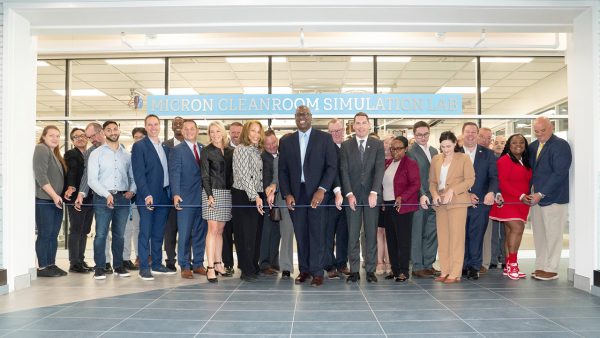
OCC’s Micron cleanroom- simulation lab ready for use after construction project
ONONDAGA — The new Micron cleanroom-simulation lab at Onondaga Community College (OCC) will train students for careers in the semiconductor and microelectronic industries. OCC on Oct. 1 hosted a ceremonial wire cutting for the new 3,000-square-foot space. Ashley McGraw Architects, of Syracuse, designed the cleanroom and related renovations to the Whitney Applied Technology Center, where
Get Instant Access to This Article
Become a Central New York Business Journal subscriber and get immediate access to all of our subscriber-only content and much more.
- Critical Central New York business news and analysis updated daily.
- Immediate access to all subscriber-only content on our website.
- Get a year’s worth of the Print Edition of The Central New York Business Journal.
- Special Feature Publications such as the Book of Lists and Revitalize Greater Binghamton, Mohawk Valley, and Syracuse Magazines
Click here to purchase a paywall bypass link for this article.
ONONDAGA — The new Micron cleanroom-simulation lab at Onondaga Community College (OCC) will train students for careers in the semiconductor and microelectronic industries.
OCC on Oct. 1 hosted a ceremonial wire cutting for the new 3,000-square-foot space.
Ashley McGraw Architects, of Syracuse, designed the cleanroom and related renovations to the Whitney Applied Technology Center, where the lab was built. PAC Associates, of Oswego, served as the general contractor on the project .
All the machines, or tools that students will learn on came from Micron chip fabrication plants in Taiwan, Singapore, Japan, Idaho, and Virginia, OCC said. Because this is a simulation lab, community members and young learners under the age of 18 can have hands-on learning opportunities, as they did at the Micron-sponsored Chip Camp in the summer of 2025, OCC noted.
Speakers at the morning event included Warren Hilton, president of Onondaga Community College, and Nick Hay, an OCC student who interned at Micron and will begin working there after completing his electromechanical-technology degree in December. Representatives of Micron, Onondaga County, New York State, and SUNY were also on hand.
Boise, Idaho–based Micron Technology, Inc. (NASDAQ: MU) is planning to build a semiconductor-manufacturing campus at the White Pine Commerce Park along Route 31 in the town of Clay.
Micron provided a $5 million donation for the cleanroom-simulation lab, and the funding was matched by both Onondaga County and New York State.
In October 2023, OCC unveiled renderings of what the Micron cleanroom- simulation lab would look like, along with related renovations to the Whitney Applied Technology Center. Work on the project began later that month.

Rescue Mission Alliance to expand with $11.6M facility
It’s among the Syracuse DRI projects SYRACUSE — The Rescue Mission Alliance of Syracuse is expanding its footprint with a new, mixed-use building in an $11.6 million project. A groundbreaking event was held on Oct. 9 for the upcoming Mission Exchange Building project, which is part of the city’s Downtown Revitalization
Get Instant Access to This Article
Become a Central New York Business Journal subscriber and get immediate access to all of our subscriber-only content and much more.
- Critical Central New York business news and analysis updated daily.
- Immediate access to all subscriber-only content on our website.
- Get a year’s worth of the Print Edition of The Central New York Business Journal.
- Special Feature Publications such as the Book of Lists and Revitalize Greater Binghamton, Mohawk Valley, and Syracuse Magazines
Click here to purchase a paywall bypass link for this article.
It’s among the Syracuse DRI projects
SYRACUSE — The Rescue Mission Alliance of Syracuse is expanding its footprint with a new, mixed-use building in an $11.6 million project.
A groundbreaking event was held on Oct. 9 for the upcoming Mission Exchange Building project, which is part of the city’s Downtown Revitalization Initiative (DRI). It features a two-story building with 25,000 square feet of warehouse space on the first floor, 12,000 square feet of commercial space, and 12,000 square feet of office space on the second floor.
The new Mission Exchange Building will allow for faster processing of donations dropped off by the public. The Rescue Mission will relocate its administrative offices to the new building and create an all-encompassing campus for its operations, the state said.
“We are grateful to Governor Hochul, the New York State Department of State and the City of Syracuse for their support through the Downtown Revitalization Initiative. This investment will help us to transform inactive land into a vibrant space that connects the Southwest Gateway with Downtown Syracuse, while expanding our Social Enterprise operations,” Dan Sieburg, CEO of the Rescue Mission, said. “The Mission Exchange Building will feature retail storage, a new 3fifteen thrift store, and second-floor offices for our Rescue Mission team, all thoughtfully designed to put love into action for the people we serve.”
The Mission Exchange Building is part of the Rescue Mission’s plan to develop and build an eight-acre campus in Southwest Gateway, where many of its clients live and work. The project is located at 240-248 West Onondaga St. in Syracuse, which is within the area under development as a brownfield opportunity area (BOA) through a BOA planning grant also funded by the New York State Department of State.
“The Rescue Mission Alliance of Syracuse has long been a cornerstone of compassion and support in Central New York, ensuring individuals and families find stability, dignity and hope,” New York Secretary of State Walter Mosley contended in the state’s announcement. “By supporting the Rescue Mission’s new facility, we’re investing in a project that gives back in every sense — revitalizing downtown Syracuse, supporting local jobs and expanding the mission’s capacity to serve people in need. This is the kind of impact we strive for through the Downtown Revitalization Initiative.”
The Mission Exchange Building project was awarded $1 million from the DRI, as well as a $500,000 grant from Empire State Development’s Regional Council capital fund program. The City of Syracuse was named a DRI round 5 winner for the Central New York region in 2022.
Additional Syracuse DRI projects
Other projects identified by the Syracuse DRI include the effort to restore three vacant buildings — Trinity Church, Gillette House, and the Parish House — into a brewery, office space, and housing.
Another will provide interior and exterior enhancements to the Southwest Community Center, including a new façade material, public-restroom upgrades, and gym improvements.
Plans also call for building a Jubilee Workforce Center, a mixed-use building that will include a workforce-training center on the first floor and workforce apartments on the second and third floors.
The projects also include restoring the Whedon House mansion to include residential apartments, commercial space, and public space. They also include redeveloping the B&B Lounge, a former bar and restaurant, into a lounge space for a restaurant with housing units above the restaurant.
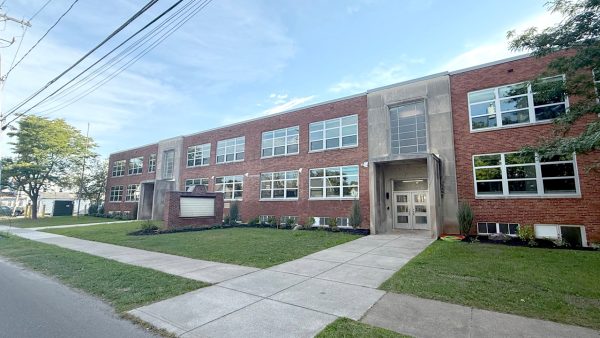
Former East Syracuse elementary school is now St. Matthew’s Condominium
EAST SYRACUSE — The former St. Matthew’s Elementary School in East Syracuse is now St. Matthew’s Condominium, following a $6.4 million project that redeveloped the structure into condominiums and apartments. A subsidiary of Redev CNY, called 214 Redev, LLC and led by Syracuse–based developer Ryan Benz, announced the project completion on Sept. 21. The redevelopment
Get Instant Access to This Article
Become a Central New York Business Journal subscriber and get immediate access to all of our subscriber-only content and much more.
- Critical Central New York business news and analysis updated daily.
- Immediate access to all subscriber-only content on our website.
- Get a year’s worth of the Print Edition of The Central New York Business Journal.
- Special Feature Publications such as the Book of Lists and Revitalize Greater Binghamton, Mohawk Valley, and Syracuse Magazines
Click here to purchase a paywall bypass link for this article.
EAST SYRACUSE — The former St. Matthew’s Elementary School in East Syracuse is now St. Matthew’s Condominium, following a $6.4 million project that redeveloped the structure into condominiums and apartments.
A subsidiary of Redev CNY, called 214 Redev, LLC and led by Syracuse–based developer Ryan Benz, announced the project completion on Sept. 21.
The redevelopment converted the former St. Matthew’s Elementary School into an energy-efficient residential community, including 21 studio, one-bedroom, and two-bedroom homes, modern appliances, and shared community amenities.
Redev CNY describes the project at 214 Kinne St. as “a transformative redevelopment in East Syracuse that delivers high-quality, affordable, and accessible homeownership opportunities to Central New York families.”
St. Matthew’s Condominium brings new energy-efficient housing options to the market “at an accessible price point,” Redev CNY said. The project is supported by $4.2 million from New York State Division of Homes and Community Renewal’s (NYSHCR) Affordable Homeownership Opportunity Program (AHOP), which provides funding to encourage the creation of affordable homeownership projects that serve low and middle-income homebuyers.
“Owning a home gives families financial stability and the opportunity to build generational wealth,” RuthAnne Visnauskas, NYSHCR commissioner, said in the Redev CNY announcement. “This $4.2 million investment is giving 21 families access to an affordable, modern, and sustainable home that they can call their own for decades to come. We thank Governor Hochul for her vision on increasing affordable homeownership and we are grateful to our partners for their continued dedication.”
The project was also supported by the Onondaga County Housing Initiative Program (O-CHIP) and a Clean Heat award from National Grid.
The project has been designed to ensure that each unit’s monthly costs — including mortgage, homeowners association (HOA) expenses, and property taxes — prioritize affordability, per the announcement. The units will be affordable to homebuyers earning 80 percent of the area median income in Onondaga County, the announcement stated.
“St. Matthew’s Condominium represents more than just housing — it’s about creating generational opportunity,” Ryan Benz, developer and founder of Redev CNY, said in the announcement. “We are committed to making sure Central New Yorkers can own high-quality homes without being cost-burdened, and we’re grateful to our partners at New York State, Onondaga County, and National Grid for making this vision possible.”

Construction begins on $12M supportive housing project in Utica
UTICA, N.Y. — The New York State Office of Temporary and Disability Assistance (OTDA) on Oct. 6 announced the start of construction on the Rev. Dr. Mary Webster Wellness Center. The $12 million project will create 20 units of permanent supportive housing in the city of Utica for individuals and families who have experienced homelessness,
Get Instant Access to This Article
Become a Central New York Business Journal subscriber and get immediate access to all of our subscriber-only content and much more.
- Critical Central New York business news and analysis updated daily.
- Immediate access to all subscriber-only content on our website.
- Get a year’s worth of the Print Edition of The Central New York Business Journal.
- Special Feature Publications such as the Book of Lists and Revitalize Greater Binghamton, Mohawk Valley, and Syracuse Magazines
Click here to purchase a paywall bypass link for this article.
UTICA, N.Y. — The New York State Office of Temporary and Disability Assistance (OTDA) on Oct. 6 announced the start of construction on the Rev. Dr. Mary Webster Wellness Center.
The $12 million project will create 20 units of permanent supportive housing in the city of Utica for individuals and families who have experienced homelessness, including veterans and their families. The OTDA’s Homeless Housing and Assistance Program provided the project with $10 million in funding.
“The apartments being developed at the Rev. Dr. Mary Webster Wellness Center in Utica will provide those who have experienced homelessness, including veterans and their families, with safe, affordable housing they can call home, as well as easy access to the essential services they need to live stable, independent lives,” New York State OTDA Commissioner Barbara C. Guinn said in the announcement.
Developed by the Utica Center for Development, Inc. (UCD), the Rev. Dr. Mary Webster Wellness Center involves extensive rehabilitation and conversion of a two-story building that was formerly used as a YWCA. The project will be built in two phases, with the first segment consisting of the development of 12 units of housing for veterans, and eight units of housing for those diagnosed with a serious mental illness. The second phase, to be developed later with other funding, will include a wellness center that will includes support services space, a fitness center, and the only indoor public-use pool in the city of Utica, the OTDA said.
Additional capital funding for the Rev. Dr. Mary Webster Wellness Center includes $200,000 from the New York State Department of Veterans Services, $1 million in American Rescue Plan Act funding from the City of Utica, $525,000 from UCD, and $200,000 from the Mohawk Valley Rehabilitation Corporation.
The Empire State Supportive Housing Initiative, administered by OTDA, is providing operating funding for the project.
“This project is a tremendous step forward in addressing homelessness in our community while also honoring our veterans and supporting those facing some of life’s greatest challenges. The Rev. Dr. Mary Webster Wellness Center will not only provide safe and stable housing, but also connect individuals and families to the critical services they need to rebuild their lives. It is especially fitting that it bears the name of Mary Webster, whose legacy of service and compassion continues to inspire,” Oneida County Executive Anthony J. Picente, Jr. said in the announcement.
A key function of UCD is operating the Central New York Veterans Outreach Center (CNYVOC), which assists an average of 2,500 veterans and their families each year offering case management; legal aid; financial and benefits assistance; and necessities, such as food, household items, and transportation. The CNYVOC operates offices in Utica, Oneonta, Rome, and Watertown and serves all of Oneida, Herkimer, Madison, Lewis, Jefferson, Otsego, Delaware, Greene, Ulster, Schoharie, Chenango, and St. Lawrence counties.
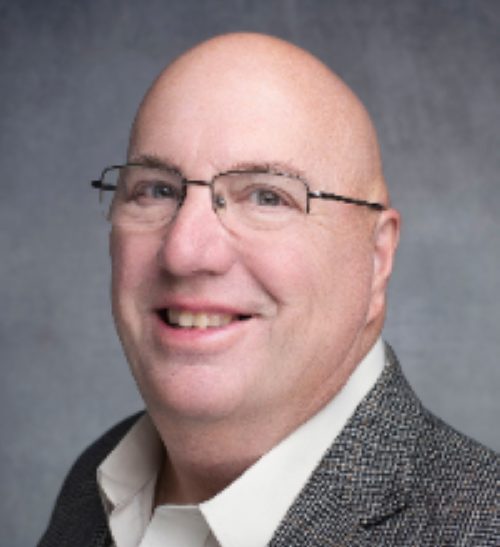
Governor names Hall chair of Adirondack Park Agency board
RAY BROOK — Gov. Kathy Hochul on Oct. 3 announced she has designated Mark Hall as chair of the Adirondack Park Agency (APA) board. Hall was originally appointed to the APA board in 2020. As a board member, he chaired the public awareness and communication and economic affairs committees and served on the local government
Get Instant Access to This Article
Become a Central New York Business Journal subscriber and get immediate access to all of our subscriber-only content and much more.
- Critical Central New York business news and analysis updated daily.
- Immediate access to all subscriber-only content on our website.
- Get a year’s worth of the Print Edition of The Central New York Business Journal.
- Special Feature Publications such as the Book of Lists and Revitalize Greater Binghamton, Mohawk Valley, and Syracuse Magazines
Click here to purchase a paywall bypass link for this article.
RAY BROOK — Gov. Kathy Hochul on Oct. 3 announced she has designated Mark Hall as chair of the Adirondack Park Agency (APA) board.
Hall was originally appointed to the APA board in 2020. As a board member, he chaired the public awareness and communication and economic affairs committees and served on the local government services and park policy and planning committees.
In addition to serving on the Adirondack Park Agency board for the last five years, Hall has worked on behalf of and alongside Adirondack Park communities for decades, per the announcement. He previously served on the Town of Fine’s board for 13 years, including eight years as town supervisor, where he spearheaded an environmental-cleanup effort to remove hazardous waste and industrial blight at a former iron-ore facility near that St. Lawrence County town. He also helped improve rural telecommunication and broadband coverage and secured Local Waterfront Revitalization Program and Smart Growth grants for the town.
Hall presently works as the Town of Fine’s water superintendent, where he oversees the water district for the North County community. In 2019, he led an $8.4-million water system infrastructure improvement project for the town, which was awarded “Project of the Year” by the American Water Works Association. He also serves as a board member for the St. Lawrence County IDA and the Development Authority of the North Country. Hall previously held board roles with the Adirondack Park Local Government Review Board, the Adirondack Association of Towns and Villages, and the Clifton-Fine Hospital.
“The Adirondack Park is one of New York’s crown jewels and a cornerstone of the North Country economy,” Gov. Hochul said in the announcement. “Balancing environmental protection while promoting sustainable economic development is key to the Park’s long-term success. Mark Hall has worked tirelessly on behalf of North Country communities and the environment for decades. He will excel as the next Chair of the Adirondack Park Agency and help build a better and brighter future for the North Country.”
APA Chair Hall stated, “The Adirondack Park Agency has grown under [the governor’s] leadership and today is well positioned to achieve its mission. From my earliest days, I have devoted my life to serving this Park and its people. I look forward to working with my colleagues and all stakeholders to ensure that the Agency continues its dual commitment to protecting the environment and supporting communities.”
The Adirondack Park Agency was created in 1971 by the New York State Legislature to develop long-range land use plans for both public and private lands within the boundary of the 6-million-acre Adirondack Park. The APA, headquartered in Ray Brook in Essex County, is a New York State governmental agency with an 11-member board, and staff of more than 50, according to its website. The board meets monthly to act on Adirondack Park policy issues and permit applications. The APA’s executive director is Barbara Rice.
New APA headquarters project proposal
The Adirondack Park Agency is currently planning to replace its 1970s-era headquarters building in Ray Brook. The agency said the current preferred site to construct a new headquarters is at 1-3 Main St. in Saranac Lake. This proposal would cost about $40 million to restore the Paul Smith Electric Light and Power building and construct a new energy efficient office building, according to a Sept. 11 announcement on the APA website. Combined, the buildings would create about 28,000 square feet of office and meeting space if built. A project dashboard with details, reports, renderings, and updates on the proposed headquarters project is available at: https://apa.ny.gov/headquarters-project.html.

Tops store remodels in Fayetteville, Manlius wrap up
MANLIUS — Work crews recently completed remodeling projects at the Tops Friendly Markets stores at Towne Center at Fayetteville and in the village of Manlius. Tops held two ribbon-cutting ceremonies on Oct. 1, beginning at the 41,000-square-foot store at 119 West Seneca St. in the village of Manlius, where it completed a $2.15 million renovation.
Get Instant Access to This Article
Become a Central New York Business Journal subscriber and get immediate access to all of our subscriber-only content and much more.
- Critical Central New York business news and analysis updated daily.
- Immediate access to all subscriber-only content on our website.
- Get a year’s worth of the Print Edition of The Central New York Business Journal.
- Special Feature Publications such as the Book of Lists and Revitalize Greater Binghamton, Mohawk Valley, and Syracuse Magazines
Click here to purchase a paywall bypass link for this article.
MANLIUS — Work crews recently completed remodeling projects at the Tops Friendly Markets stores at Towne Center at Fayetteville and in the village of Manlius.
Tops held two ribbon-cutting ceremonies on Oct. 1, beginning at the 41,000-square-foot store at 119 West Seneca St. in the village of Manlius, where it completed a $2.15 million renovation. The second formal opening event took place at the 62,000-square-foot Towne Center at Fayetteville store (located in the town of Manlius), where the renovation cost about $2.25 million, per a Sept. 26 announcement on the Tops website.
The remodels included an enhanced interior décor and paint “to elevate the overall shopping atmosphere,” all new flooring throughout the stores, and installation of new user-friendly self-checkout aisles, Tops noted.
The effort also included renovated restrooms, upgraded LED (light-emitting diode) lighting to enhance energy efficiency and visibility, and new shopping carts.
The renovation projects also resulted in an expanded Deli and Carry Out Café featuring Boar’s Head, fresh sushi, a Marketplace Deli, and convenient Meals to Go, as well as a refreshed bakery department with expanded frozen selections, new cake and donut fixtures, and a new bread wall.
“We’re proud to invest in these remodels that will bring an updated, more convenient, and enjoyable shopping experience to our customers,” Ron Ferri, president of Tops Friendly Markets, said in a statement. “These enhancements are designed with our shoppers in mind, offering more fresh food options, time-saving amenities, and a more modern environment overall.”
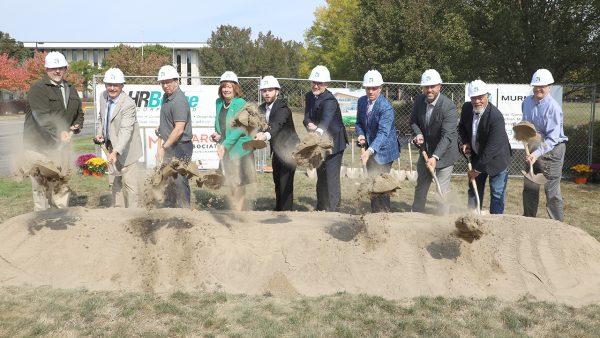
MVCC expects to finish work on Applied Technology Center in late 2027
UTICA, N.Y. — Mohawk Valley Community College (MVCC) expects its upcoming Applied Technology Center (ATC) to be completed by late December 2027. MVCC on Sept.

Oswego Hospital to expand emergency and imaging department
It’s a $14 million construction project OSWEGO — A $14 million, multi-phase construction project at Oswego Hospital will renovate and expand its emergency and imaging department. The effort is “designed to enhance emergency care, streamline diagnostic services, and create a safer, more efficient hospital experience for patients and their families across CNY,” according to
Get Instant Access to This Article
Become a Central New York Business Journal subscriber and get immediate access to all of our subscriber-only content and much more.
- Critical Central New York business news and analysis updated daily.
- Immediate access to all subscriber-only content on our website.
- Get a year’s worth of the Print Edition of The Central New York Business Journal.
- Special Feature Publications such as the Book of Lists and Revitalize Greater Binghamton, Mohawk Valley, and Syracuse Magazines
Click here to purchase a paywall bypass link for this article.
It’s a $14 million construction project
OSWEGO — A $14 million, multi-phase construction project at Oswego Hospital will renovate and expand its emergency and imaging department.
The effort is “designed to enhance emergency care, streamline diagnostic services, and create a safer, more efficient hospital experience for patients and their families across CNY,” according to an Oct. 6 announcement from Oswego Health, the hospital’s parent health system.
Oswego Health has selected the Hayner Hoyt Corporation of Syracuse as the general contractor on the project. The health system expects the renovation effort to conclude by the end of 2026.
A New York State Healthcare Facility Transformation Program grant and contributions from community donors are helping to fund the project.
“This is a critical investment in the health and safety of our community — one that comes at a time when every dollar must be stretched, but also when the need is greatest,” Michael Backus, president and CEO of Oswego Health, said in the announcement. “Thanks to state support and community generosity, we can finally reimagine how emergency and diagnostic care is delivered locally. This is more than a construction project — it’s a promise to the families we serve.”
Project details
The project targets 17,800 square feet of space on the first floor of Oswego Hospital.
The first phase, which is expected to last about 15 weeks, focuses on patient experience and hospital security by creating a single, secure point of entry into the acute care community hospital. The current main hall will close, and all patients and visitors will enter through a new centralized lobby area, where they will be welcomed and issued badges.
The second phase, which is expected to last about 32 weeks, will expand Oswego Hospital’s emergency department from 17 to 20 treatment rooms and is described by Oswego Health as the “centerpiece” of the project.
The final phase, which Oswego Health expects will last about 13 weeks, will consolidate all imaging services into a modernized medical-imaging department on the hospital’s first floor.
The effort will include a new CT scanner and upgrades to the existing unit, along with new rooms for X-ray, mammography, bone density, ultrasound, and echocardiograms.
Get our email updates
Stay up-to-date on the companies, people and issues that impact businesses in Syracuse, Central New York and beyond.
